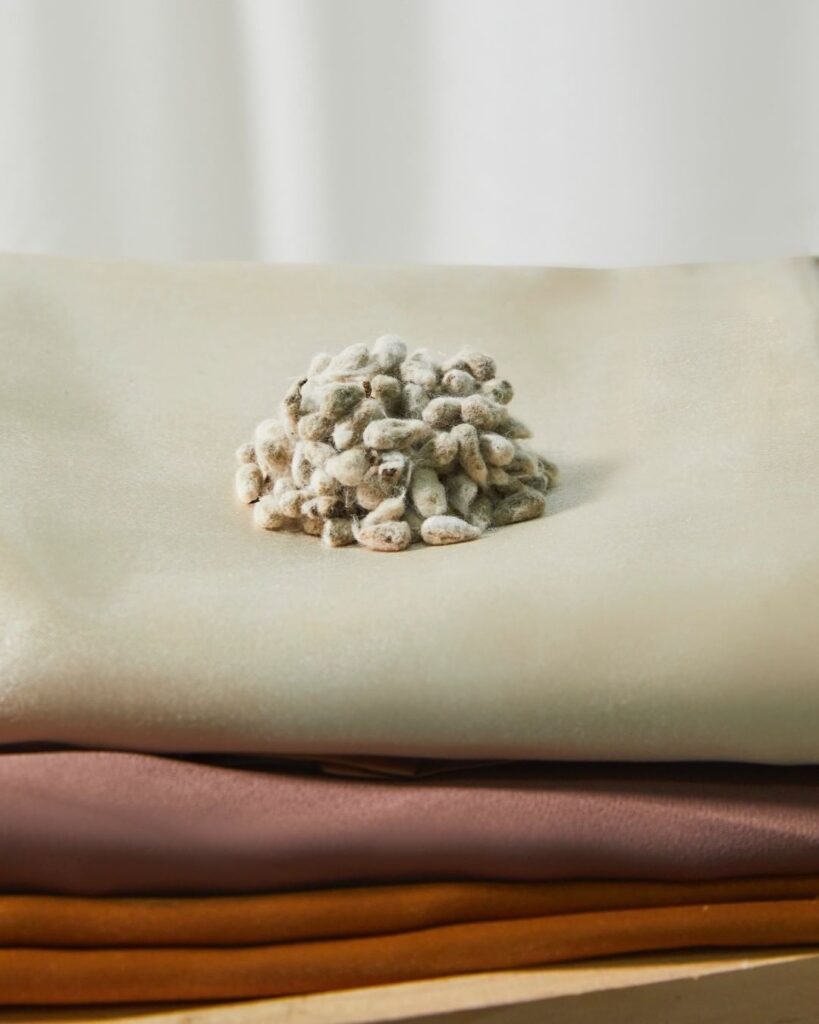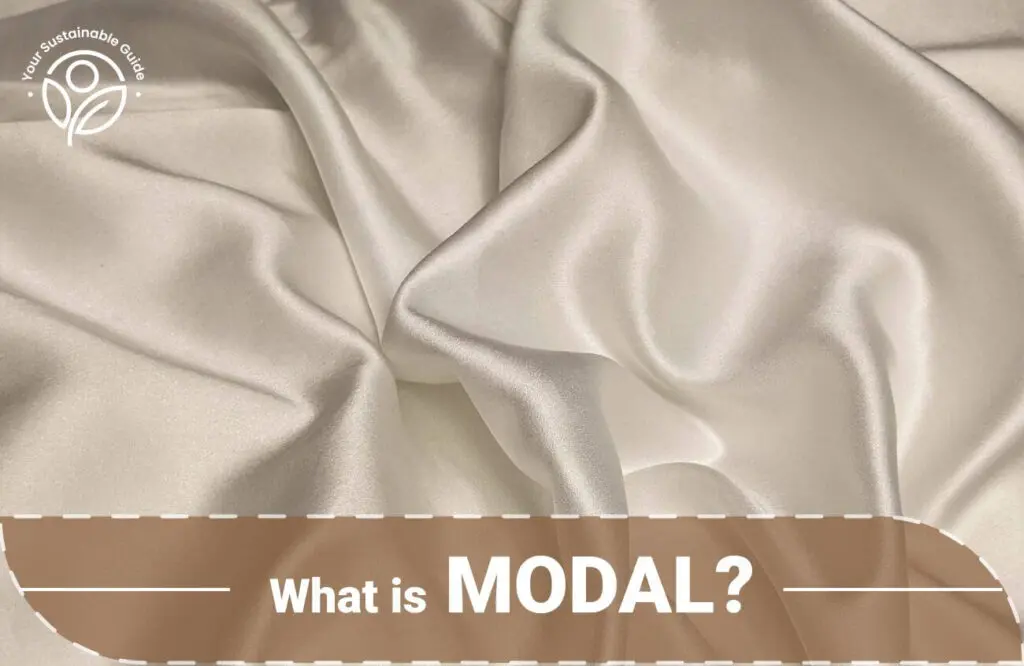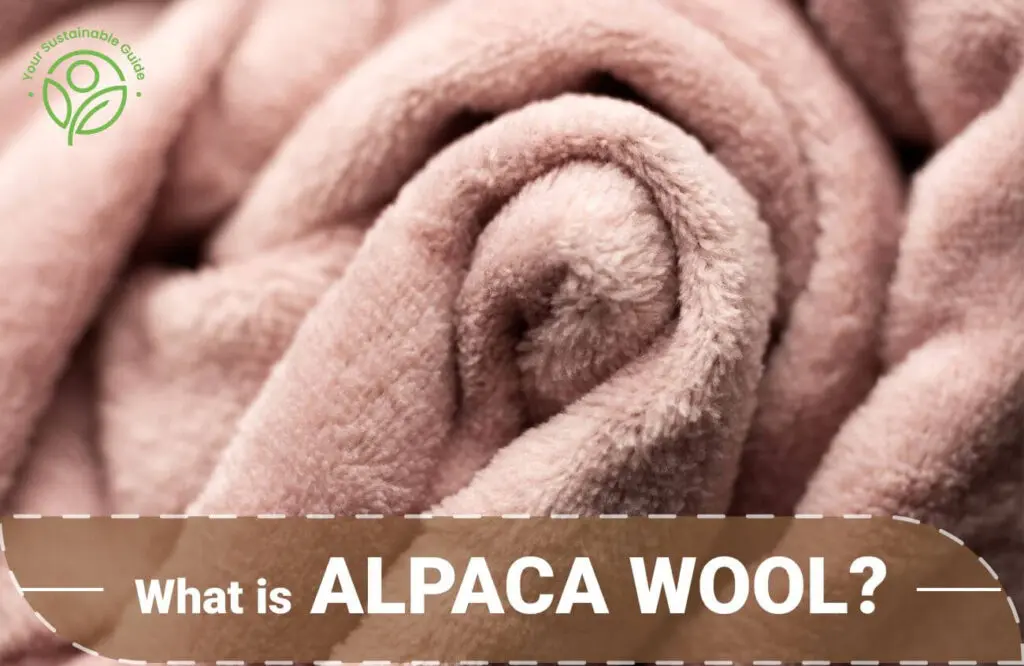Sustainable fabrics have become the new pop culture. New innovative technologies for creating eco-friendly fabrics are all the efforts we appreciate. We mean fabrics made from cactus, pineapple, deadstock materials, apples, and God knows what. Wait! Really?
Yes, getting lost in the jungle of sustainable fabrics can be pretty overwhelming. With different certifications and manufacturing processes to check and sustainable sourcing criteria to analyze, who said being sustainable would be easy? But we love you for your efforts to be a conscious shopper, and with that, today we’ll enlighten you all about the viral cupro fabric.
Cupra, more commonly known as cupro fabric, is a plant-based fiber that is a perfect vegan alternative to silk. Imagine silky smooth feels but way cheaper! That’s what Cupro fabric is. Made with cotton waste, cupro doesn’t need to be grown separately. Hence, this sustainable fabric plays a significant role in waste reduction and water conservation. How cool is that! But is Cupro really as sustainable as it claims to be?
What is Cupro Fabric?
Invented first in Germany in the 1900s, Cupro or Cuprammonium rayon is a semi-synthetic fabric made of cotton linter, a by-product of cotton which is considered as textile waste. This cotton linter is a by-product of cotton that is too tiny to spin and would otherwise become textile waste. After undergoing heavy processing, Cupro becomes a much softer fabric than conventional cotton, having a similar weight, luster, and silky feel. Cupro can also be extracted from recycled cotton garments.

Cupro is also known as Ammonia silk and Bemberg (the American patented name by the company J.P. Bemberg). The cupro fabric is thin, silky, and sheer, making it perfect for form-fitting dresses. Coordinated with other materials, apparel like t-shirts, blouses, intimate wear, scarves, etc. can also be produced from cupro. Indeed a curious combination of plant-based fibers, processed with chemicals but resembles silk.
Currently, China is the leading producer and exporter of cupro. Apart from China, Asahi Kasei Corporation also produces a large portion of the world’s cupro fabric. However, environment-friendly cupro fabric is, its processing does involve large quantities of toxic chemicals like caustic soda, ammonia, and copper. All these chemicals if not disposed off carefully may end up causing more harm than good to the environment.
How is Cupro Fabric Made?
Cupro or Cuprammonium rayon is made of regenerated cellulose from cotton linter (the fluff that sticks around the cotton seeds after being harvested). As part of the production process of cupro, these fuzzy cotton fibers are immersed in a mixture of copper and ammonia, resulting in a new substance, which is again soaked into a caustic soda solution
After being dunked into chemical solutions at different levels, the final substance gets pushed through spinnerets to form threads. These threads undergo a variety of hardening baths to rebuild the cellulose and eliminate the presence of ammonia, copper, and caustic soda remnants, making the threads fit to be woven into cupro fabric.
Is Cupro Fabric Sustainable?
Cupro is a plant-based fabric, making it cruelty-free, vegan, and 100% biodegradable, however, it is not a fully sustainable fabric. In addition, it is made of cotton by-products and since conventional cotton production is a wasteful and water-intensive process, using every bit of the cotton helps massively in environmental conservation. Also, unlike silk and its dry-cleaning requirements, cupro is machine-washable which makes it more eco-friendly. So yes, definitely a step closer to being a sustainable fabric.
Asahi Kasei Corporation, a leading producer of cupro globally has announced zero emission and energy conservation goals in its cupro production process. This company thoroughly recycles 100% of the waste generated during Cupro processing. The Asahi Kasei Corporation’s Cupro is Eco Mark certified which is a recognized certification by the Japan Environment Association.

But Wait! Cupro production is not all glitters. If cupro is not manufactured in a closed-loop system where its toxic waste is recycled and reused, it may have a severe impact on the environment. As we’ve already mentioned, China is the largest producer of Cupro, and this country’s textile factories are infamous havens for both reckless usage of harmful chemicals and the modern-day slave system.
With zero efforts towards environmental conservation, China has mastered the science of making money by transforming waste products into cheap semi-synthetic and synthetic fabrics. Cupro manufacturing is inexpensive because Hello! we’re talking cotton waste, ammonia, caustic soda, and copper, all of which, well, are downright cheap and highly toxic.
Is Cupro Fabric Affordable?
Yes, cupro fabric is quite cheap compared to natural fabrics like linen, cotton, silk, and hemp. However, it undoubtedly gives a soft, smooth, and silky feel just like the exotic and expensive silk fabric. Since the base material of cupro remains to be cotton linter, a huge amount of this textile waste can be acquired at very little price. All the cupro manufacturers need to do is, whip this cotton waste into a mixture of cheap toxic chemicals and form a totally new material.
Cupro is affordable because it is sold at extremely low prices but with enormous profit margins, making it a win-win for both the consumers and the producers.
Cupro Fabric Certifications
Cupro production has ended in the United States because manufacturers were unable to observe basic water and air protection regulations. But some sustainable brands do work with certified cupro as their base fabric. So far a sustainable cupro manufacturer can apply for these 3 certifications.
Properties of Cupro Fabric
Cupro has all the properties to be a fine fabric with a heavy thread count that feels like luxurious silk. It is a perfect affordable solution to breezy beach wear, exotic evening wear, lightweight shawls, blouses, and everything in between.

- Cuprammonium rayon orCupro is 100% biodegradable, making it an excellent option among sustainable fabrics.
- Cupro is referred to as vegan silk as it is smooth, fine, and soft to the touch.
- Unlike most fabrics, Cupro dries faster, is stretch-resistant, and is hypoallergenic.
- Cupro can be dyed remarkably and soaks up vibrant prints easily.
- Cupro has good elasticity and tensile strength, making it quite durable.
- Moisture doesn’t get trapped between a cupro-based garment and your skin, hence no body odor and fewer wash cycles.
- Cupro keeps you cool in summer and gives moderate heat during winter by retaining the body’s temperature.
- As a result of cupro fabric’s durable nature, it is easy to wash. All they need is a mild detergent and a gentle machine wash.
Pros & Cons of Cupro Fabric
Cuprammonium rayon or Cupro along with many advantages does have some significant disadvantages which are too hard to overlook in the case of the sustainable fabric category.
Pros of Cupro Fabric:
- Cotton linter is a type of cotton waste, which undergoes processing to make cupro. Hence an amazing way of reduction in textile waste.
- Cupro’s fully biodegradable properties make it a bonus for the environment.
- Cupro feels just like silk. But unlike silk which is extracted from silkworms, cupro production doesn’t involve any insects or animals, making it a cruelty-free and vegan form of silk.
- Cupro has a luxurious look and drapes elegantly.
- It is extremely breathable, lightweight, and long-lasting fabric.
- It can be easily blended with other fibers like linen, cotton, etc.
- It is non-allergenic and anti-static.
- Cupro is easily machine washable with mild detergent.
Cons of Cupro Fabric:
- Cupro’s processing involves highly toxic and harmful chemicals.
- Banned production in the U.S. because of its dirty processing technique.
- If the temperature goes above 180°C, Cupro can easily ignite.
- Cupro can only be washed in a cold cycle. Warm or hot water is a strict no-no.
- When ignited, Cupro fabric chars and leaves behind a coppery residue.
Uses of Cupro Fabric
Cuprammonium rayon is quickly gaining popularity for its lightweight, elastic and breathable nature. It is considered an ideal fabric for sportswear, form-fitting and flowy dresses, swimwear, intimate wear, trousers, t-shirts, resort wear, and whatnot.

How to Care for Cupro Fabric
How to Wash Cupro Fabric
- Cupro is machine washable in cold or normal water, below 40°C, and tumble-dried at a speed below 600 revolutions per minute. Although it is best to check your clothing tag for specific wash and care instructions.
- Do not use chlorine-based or any other type of strong detergent. A mild detergent is all that your cupro clothing requires
- Using a gentle cycle setting in your washing machine, just like used for wool or silk, will be light on your cupro garments and won’t let the dye bleed out.
- Hang out to dry naturally.
Maintenance of Cupro Fabric
- Iron your cupro clothing only when necessary, and that too at the lowest temperature.
- Ironing should be done through a damp cloth as cupro fabric may easily melt in case of any wrong temperature setting or too much ironing.
- Washing your cupro clothes less frequently is another way to extend the garments’ life.
- Keeping away from high temperatures is a must as cupro chars easily.
Famous Brands That Use Cupro Fabric
Best Alternatives to Cupro Fabric
There are many sustainable fabrics that can be good alternatives to cupro, but below we’ve compiled a list of semi-synthetic fabrics that have similar properties to cupro. Take a look.
- TENCEL™ Lyocell – Currently considered as the best sustainable semi-synthetic fabric, Tencel Lyocell can be a better alternative to cupro as it is sustainably made of cellulose obtained from the pulp of bamboo or eucalyptus wood. Having similar properties to cupro, Tencel Lyocell is also a semi-synthetic fiber that is processed in a closed loop where 99% of the chemical-filled wastewater is fully recovered and reused, making it the most eco-friendly fabric.
- TENCEL™ Modal – Tencel Modal is yet another alternative to cupro. A semi-synthetic fiber, modal is made from cellulose obtained from beech trees that are sustainably harvested. This fabric also undergoes chemical processing just like any other semi-synthetic fiber but the environmental impact is very low as the chemicals are used in very fewer amounts. Modal also holds similar properties to cupro and is in fact better in many terms.
- EcoVero – EcoVero is one of the mot innovative fibers recently introduced by textile giant Lenzing™. With properties similar to cupro, and the above-discussed lyocell and modal, EcoVero is another semi-synthetic sustainable fiber that is responsible for 50% less carbon emissions and water consumption in its production process. This fabric is known for its smoothness, longevity, and sheen and is quite affordable.
Conclusion
While cupro fabric is all about repurposing cotton waste and converting it into a comfortable fabric, cupro production is quite a complex process. This vegan alternative to silk does have some questionable processing steps which are hazardous to the environment. However, if compared to other synthetic fabrics, cupro’s carbon footprint is way low. Cupro is rather an innovative step towards following a circular ecosystem in the textile industry.
Our advice when you go cupro shopping- Do check the brand’s sourcing details like where and how it is made, along with the working conditions of the facilities. All these factors are vital for a fabric to be truly sustainable. Be sure to make the most ethical choice by opting for brands that are transparent about their processes.







